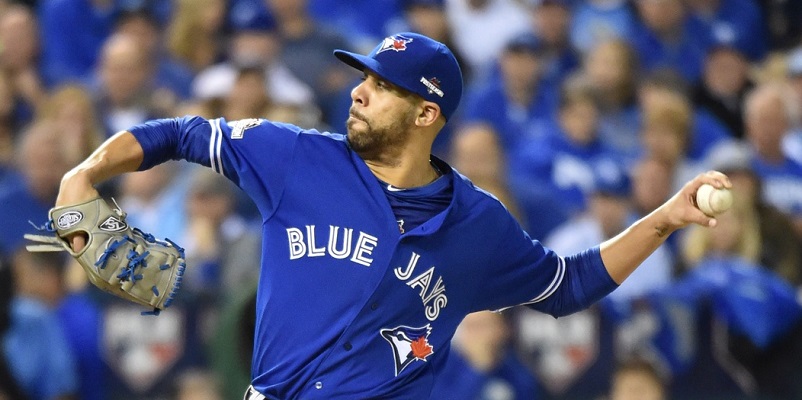The Red Sox enter the offseason in search of a frontline starting pitcher. Just about everyone knows that.
Dave Dombrowski has talked at length about the team’s need to add a “horse” to lead the rotation. Now the question becomes whether he’ll do so through free agency or by trading from the organization’s bundle of touted prospects.
Considering the depth currently in Boston’s rotation, most observers expect the club to acquire just one starter this offseason and piece together a solid staff behind him. Yet that reality shouldn’t necessarily keep Dombrowski from looking to add multiple starters if the right opportunity presents itself.
Indeed, the Red Sox front office shouldn’t hesitate to be aggressive in reshaping the team’s starting rotation. Given the uncertainty surrounding many of Boston’s starters after a disappointing 2015 campaign, the club could benefit even more by bringing in a couple of hurlers to improve the roster’s pitching outlook. That the Red Sox have both money to spend and numerous prospects down on the farm only opens up more possibilities for Dombrowski this winter.
For an executive who is celebrated for wheeling and dealing at the major league level and building deep, talented rotations, it shouldn’t necessarily come as a surprise if Dombrowski chooses to reshuffle a large portion of Boston’s starting staff. And considering he isn’t exactly known for holding onto young talent, perhaps Dombrowski will decide to get aggressive in improving the pitching portion of the team’s roster.
Yet just how would the Red Sox make room for multiple new starters this offseason?
They could go any number of routes, but Dombrowski may decide the club is best served by dealing one of the starters presently penciled into the rotation. Although Wade Miley has only been in Boston for a year, his team-friendly deal could make him a solid trade piece, especially if Dombrowski determines that he can bring in a better option this winter.
The same goes for Clay Buchholz, who has club options in each of the next two seasons that make the injury-prone hurler a far less risky proposition. If Dombrowski decides Buchholz isn’t worth the trouble, the righty could certainly be included in a package that either nets or makes room for another pitcher in return.
Additionally, Boston has two young, promising southpaws on the roster in Eduardo Rodriguez and Henry Owens. While Rodriguez is unlikely to be traded after an impressive rookie campaign, Owens shouldn’t be viewed in the same manner, even if his ability to garner whiffs makes his potential intriguing.
Much of what happens will depend on however the Red Sox obtain that frontline arm. If they sign a top free-agent hurler—be it David Price, Zack Greinke or Johnny Cueto—they could package one of their current starters with a couple prospects to bring in another dependable pitcher to fit into the rotation.
Determining just who might be available via trade is never easy, but names like Jose Quintana, James Paxton and Tyson Ross (all of whom have been mentioned as trade candidates) could be good fits. In addition, acquiring a mid-rotation arm in this way wouldn’t cost Boston nearly as much in terms of prospects as someone like Sonny Gray.
The big names on the open market have deservedly received much of the buzz, but there is plenty of depth in this free-agent starting pitching class as well.
Of course, if Dombrowski decides to pull the trigger on a bigger deal for an elite starter, the Red Sox could further bolster their rotation by signing a mid-tier free-agent pitcher. The big names on the open market have deservedly received much of the buzz, but there is plenty of depth in this free-agent starting pitching class as well.
Someone like Scott Kazmir could be a great fit, and so too could Yovani Gallardo or Hisashi Iwakuma, though signing either would require Boston to forfeit its first-round draft pick. Japanese righty Kenta Maeda, who could be posted within the coming weeks, is another option if the Red Sox want to add further stability to their rotation.
All of this is speculation for the time being, but the larger point remains. The organization is currently loaded with noteworthy prospects and has money to spend. And despite Boston’s rotation depth, the likes of Buchholz, Rodriguez, Owens and Rick Porcello mean the staff’s performance in 2016 is open to a wide range of variance and uncertainty.
As a result, the front office can afford to be aggressive in stabilizing the rotation without mortgaging the future. Given Dombrowski’s track record, moreover, allowing him to go to work with all that money and young talent at his disposal might just be the best option for the club’s 2016 chances anyhow.
Next year’s free-agent class doesn’t have nearly the level of quality or depth as this offseason’s, which means the time could be right for the Red Sox to make multiple moves and bolster their rotation. Obtaining a frontline starter is the first step, of course, but Boston shouldn’t just stop there.
With tons of assets in their arsenal and loads of talent potentially available, this winter presents a unique opportunity for Dombrowski and the Red Sox to strike in a big way and make multiple moves to improve the rotation.
Photo by Peter Aiken/USA Today Sports Images

Like the thought, but aren’t the Sox already loaded with “mid-tier” pitchers? Gallardo or Iwakuma are going to cost big money AND a loss of the Sox’ No. 1 pick. Kazmir makes more sense, but is he that much better than what they already have?